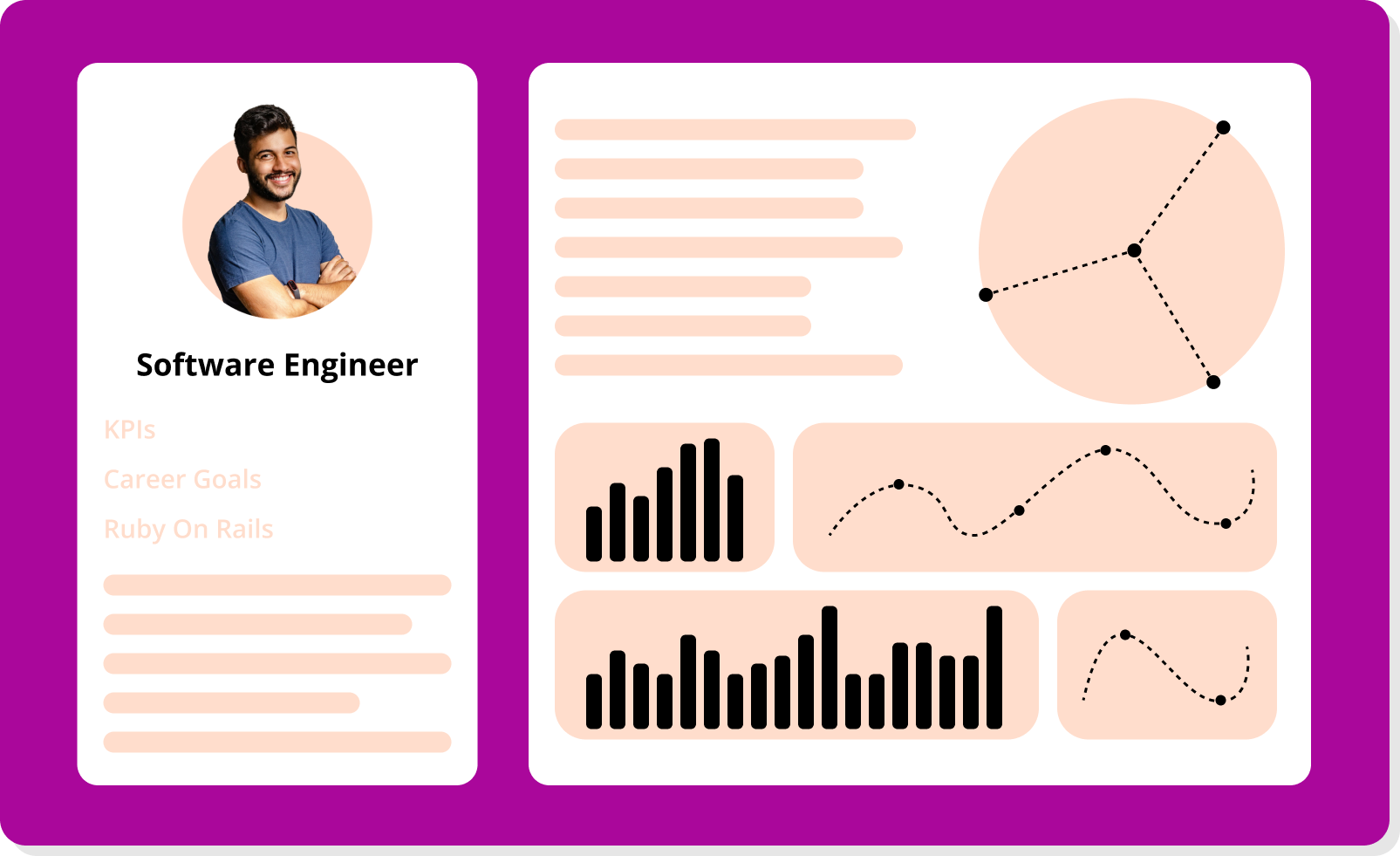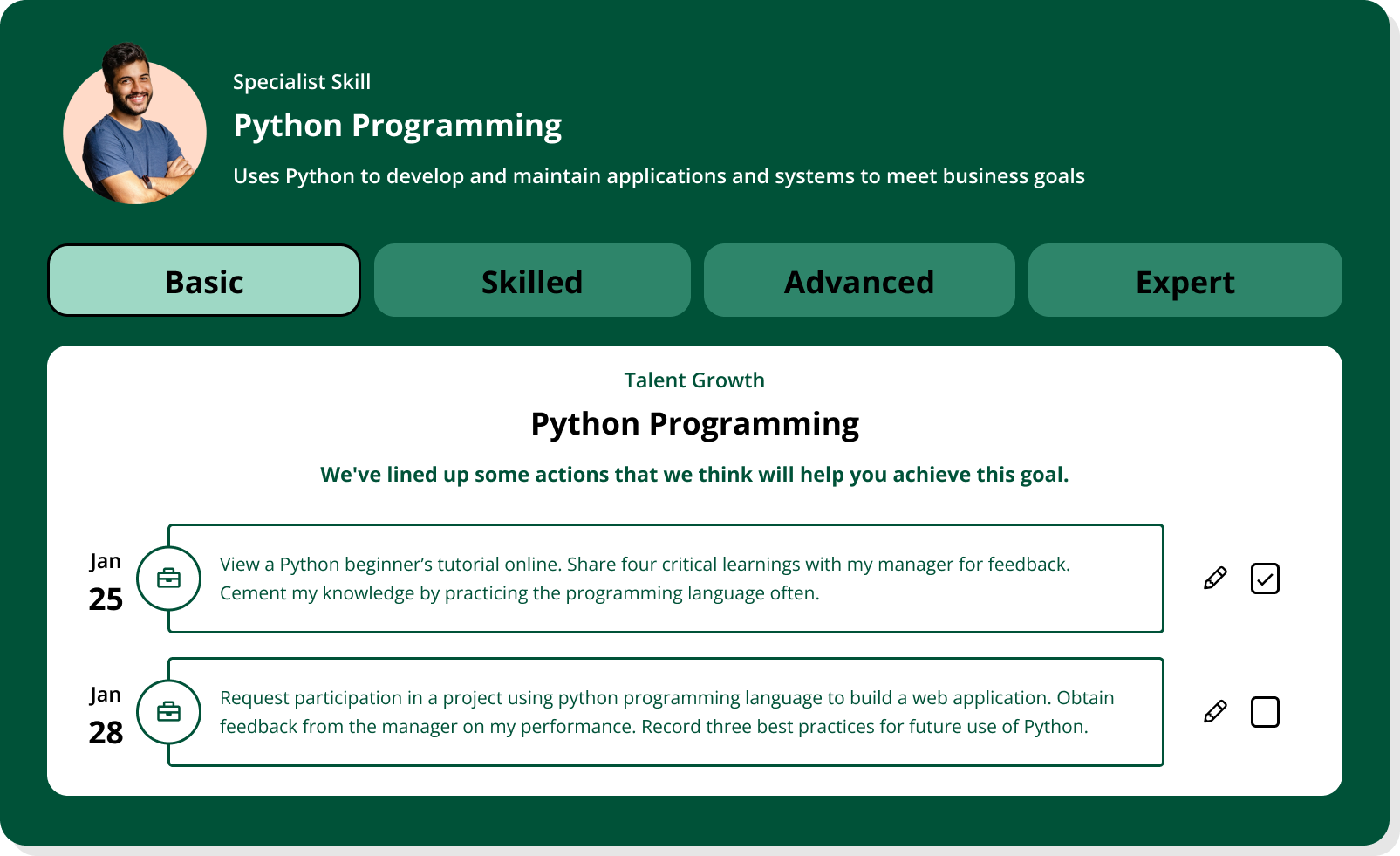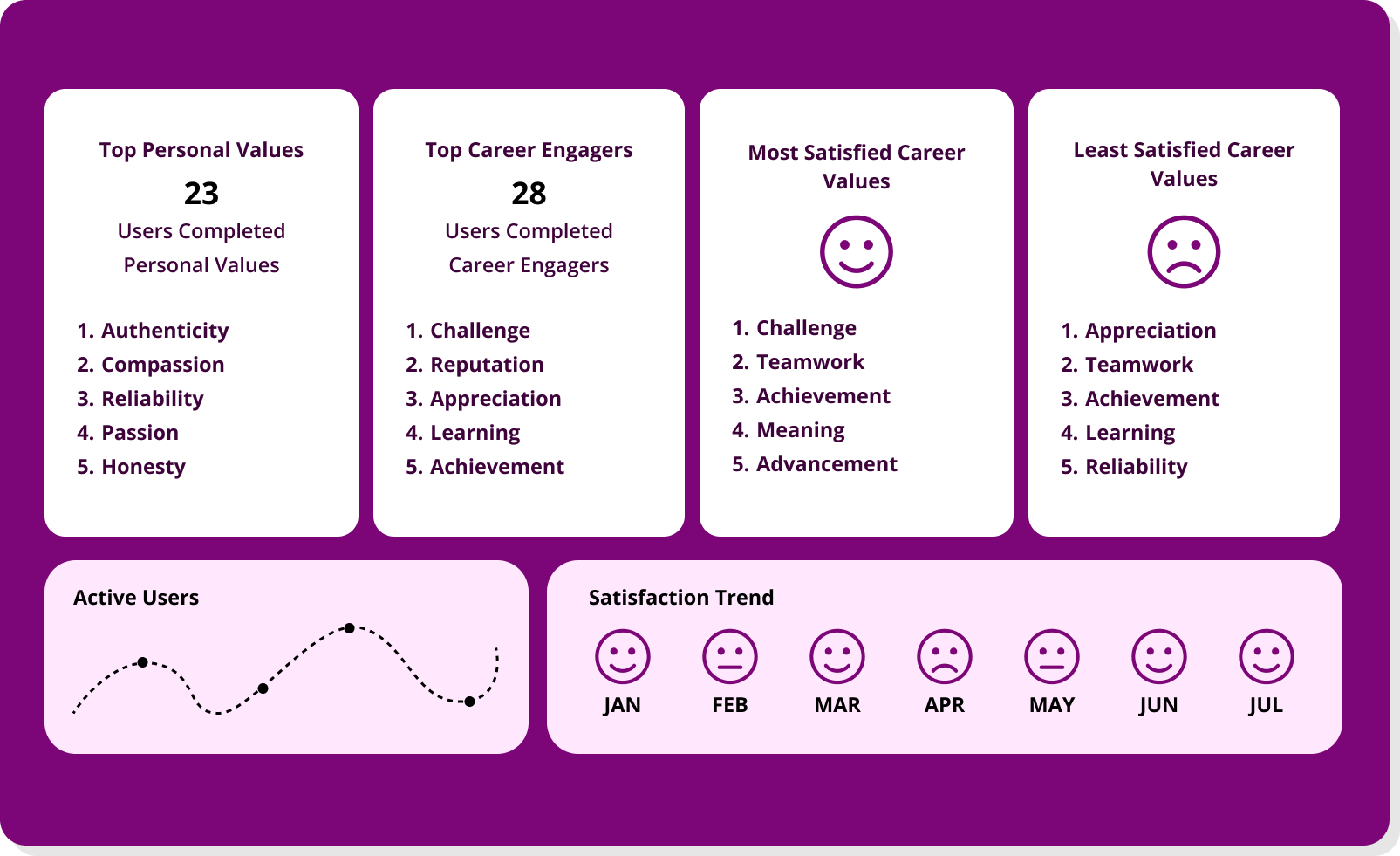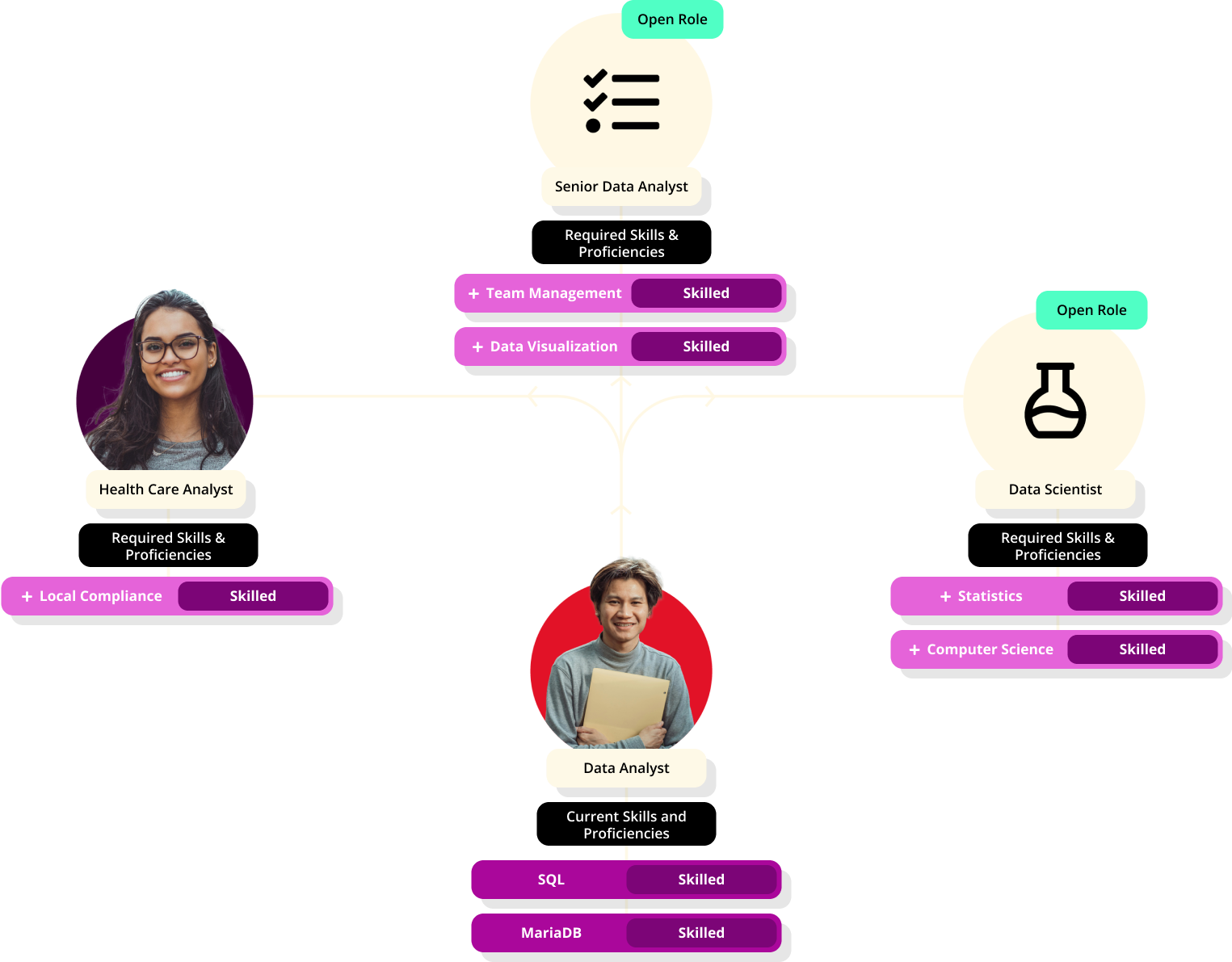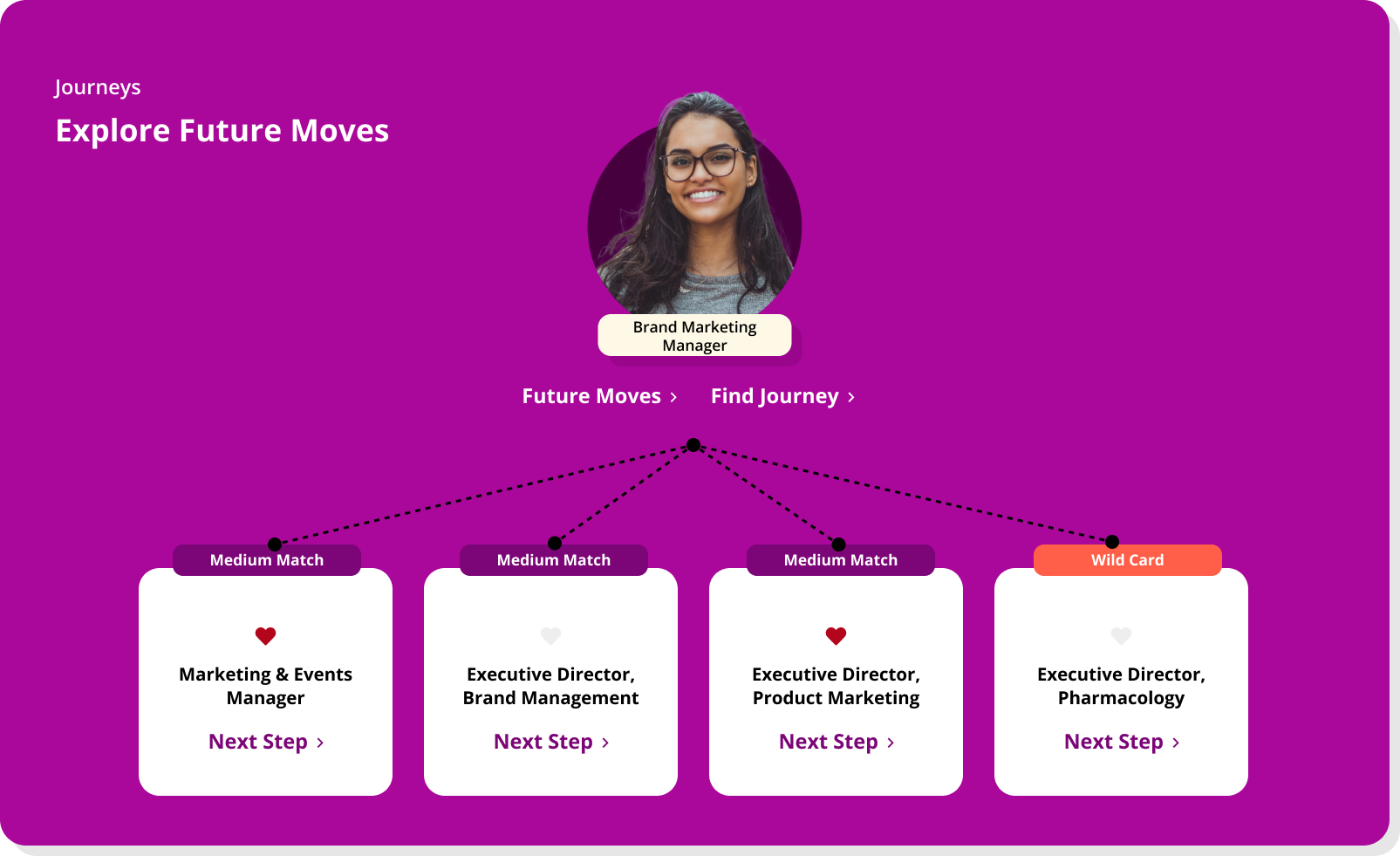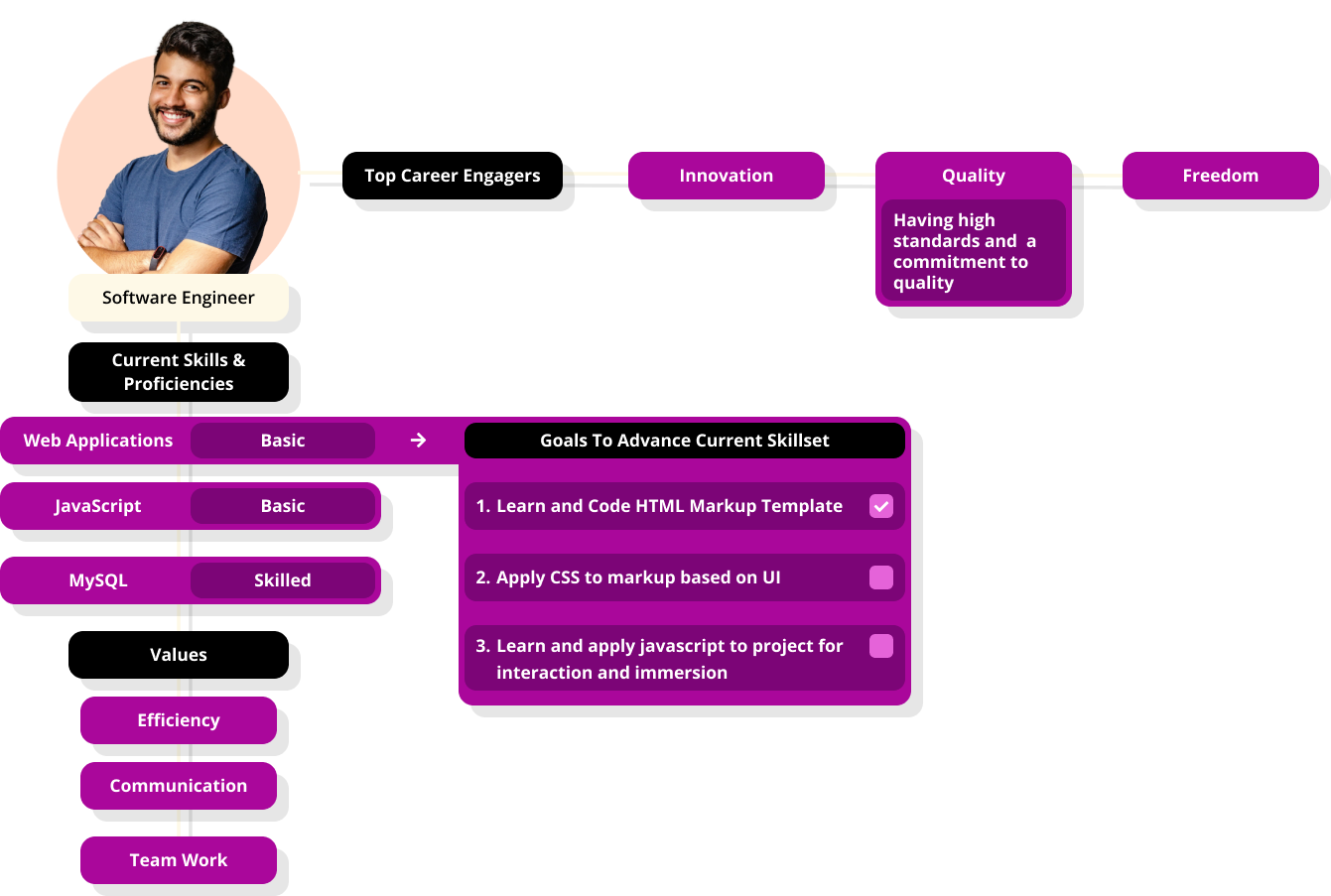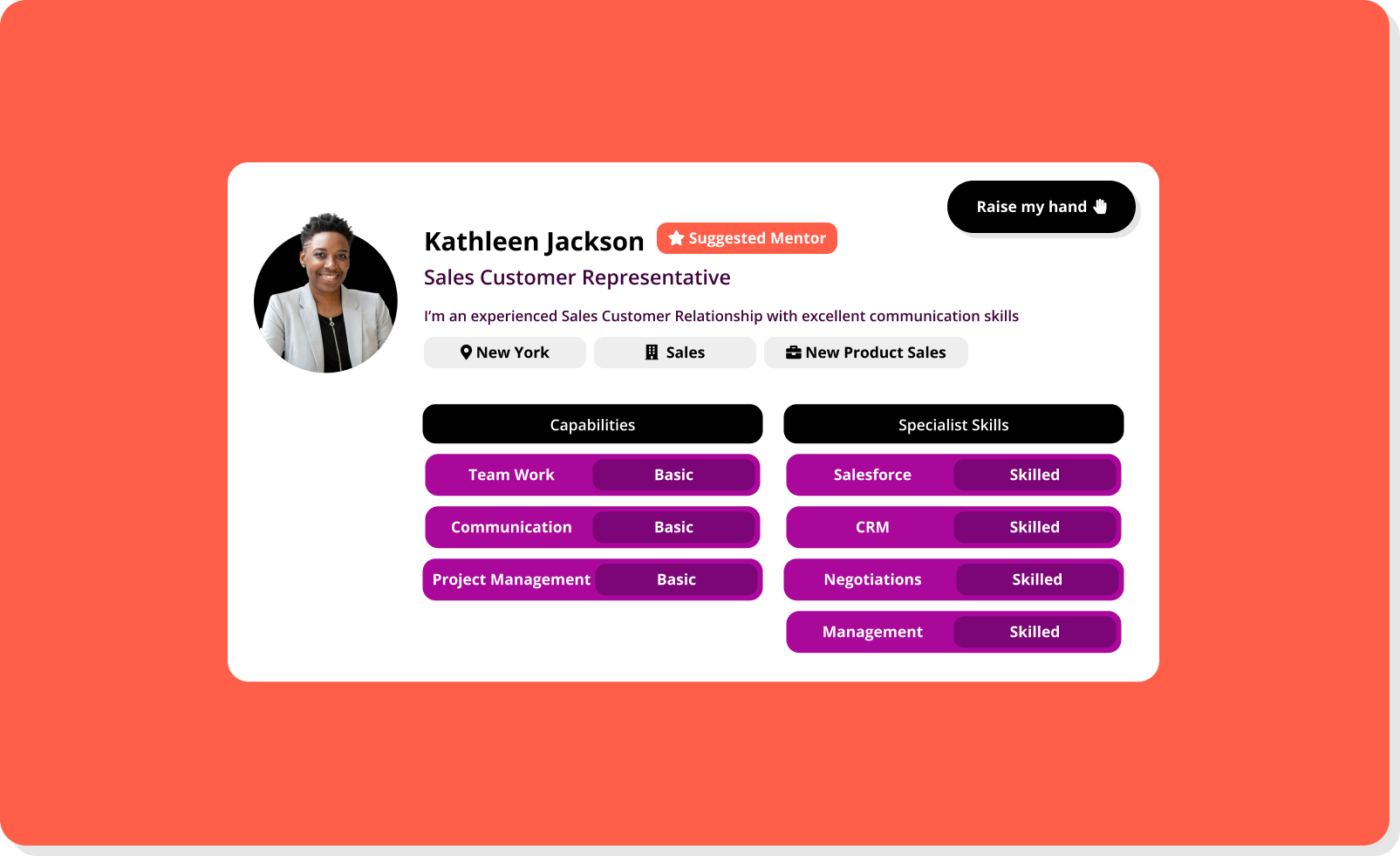Restructuring occurs when an employer changes the nature and functions of an employee’s position. This often necessitates updating the job description to reflect new responsibilities and outcomes.
This can include horizontal restructuring – when a worker’s current job requirements are modified to include some new tasks performed in other jobs on the same level – or vertical restructuring – when a position is given responsibilities and tasks previously performed at higher levels.
So even if you do retain your position, it’s quite likely that your role will change, and your responsibilities expand. Fear of the new, unknown, or different, is often a source of great stress for employees at work, and for people in general, regardless of how smart and sensible they are.
What is job restructuring?
Job restructuring is a strategic process where an employer modifies an employee’s role by either removing or adding responsibilities or altering the job’s essential functions. This can be done for various reasons—accommodating an employee with a disability, enhancing company efficiency, or adapting to market changes.
At Fuel50, we see restructuring less as a headcount exercise and more as a skills realignment process. Across our dataset, employees routinely signal that their talents aren’t being fully utilized—81% report having underused skills. That insight reframes restructuring from a reactive measure into a proactive opportunity to re-match untapped potential with evolving business priorities. When viewed this way, restructuring becomes a positive, skills-based redesign rather than an organizational setback.
Here are some examples of how this might look in practice:
-
Modifying a job: Removing redundant or outdated tasks to streamline operations and focus on high-value skills.
-
Adding new tasks: Introducing responsibilities that stretch existing strengths and align with future-focused skill needs.
-
Changing essential functions: Adjusting core duties to better align with shifting goals or customer demands.
-
Providing reasonable accommodations: Making job adjustments that enable employees with disabilities to perform essential functions effectively.
Restructuring can also take two forms—horizontal and vertical.
-
Horizontal restructuring emphasizes redeployment and skill adjacency. For instance, Fuel50’s talent marketplace identifies internal candidates who may not have held similar titles but share overlapping or transferable skill sets (e.g., “data analysis” or “customer centricity”).
-
Vertical restructuring focuses on progression, where proficiency deltas—gaps between current and target skill levels—highlight promotion-ready talent. This vertical insight ensures that employees see restructuring not as displacement, but as structured opportunity for growth.
Through this lens, restructuring becomes a skills mobility strategy—helping companies retain institutional knowledge while creating an adaptable, future-ready workforce.
What are the reasons for job restructuring?
One of the primary reasons for job restructuring is company reorganization. This can involve significant changes to the company’s structure, such as downsizing, merging with another company, or outsourcing certain functions.
At Fuel50, we see several consistent restructuring triggers across our client base, supported by data from large-scale transformation programs.
Reasons we actually see in the data
-
Mergers and acquisitions (M&A) integration: When organizations merge, overlapping roles and fragmented skill sets often emerge. Using Fuel50’s Talent Ontology and skills-inference engine, you can identify transferable and overlapping skills across both legacy companies, enabling seamless redeployment instead of redundancy.
-
Automation and AI adoption: As AI and LLM technologies automate repetitive work, companies restructure roles to emphasize human capabilities like critical thinking, creativity, and stakeholder influence. Our clients use Fuel50 to reskill impacted employees into roles adjacent to their existing strengths—like data insight, customer strategy, or technology integration.
-
Product line pivots or market shifts: When companies shift strategic focus (e.g., moving from legacy services to digital platforms), Fuel50 supports role redesign by highlighting the future-critical skills most adjacent to each role.
A unique advantage during these transitions is that Fuel50 can detect skills even for employees who haven’t logged in yet. Using role-inferred and validated skills, the platform scans existing job architecture data to surface potential internal candidates early—lowering discovery friction and ensuring that every employee’s capability is visible in a restructuring exercise .
Through thoughtful, skills-based job restructuring, what once looked like a reduction exercise becomes a data-driven redesign of how and where talent creates value.
Top 5 stressors for employees during restructuring
- Fear of personal failure within a new structure: ”It will never work out for me. I won’t be able to do it.”
- Preferring the familiar, old routine: ”The old way was much better, we knew what we were doing before.”
- Denial of the reasons for change: ”Why did we have to do this anyway? I can’t see how this will improve anything.”
- Unwillingness to learn new systems and processes: ”I already know everything I need to know to do my job, nothing new can help me.”
- Fear of the unknown: ”I don’t know what it will be like for any of us, but I know we will all be worse off.”
These insecurities are common and often rooted in uncertainty rather than resistance. They surface when communication and visibility are limited, leaving people to assume the worst about their future roles and skills relevance.
Here’s how transparent skills data reduces each stressor
Each of these stressors can be addressed through visibility and personalization—showing employees where they stand today, what’s possible next, and how to get there.
- Fear of failure → Personalized development paths & manager-validated skills
Many employees underestimate their capability. Fuel50’s personalized development paths help them see their proven strengths alongside specific skill targets.As Roel Deuss, Fuel50’s VP of Solutions, explains:“Manager-validated skills help employees realize they already have most of what’s needed to succeed in a new role—it’s not guesswork; it’s evidence.”
This reduces self-doubt and builds confidence during transition conversations. - Preferring the familiar → Career pathing views that show adjacent roles
Employees who resist change often fear losing control or belonging. Fuel50’s career pathing visualization highlights adjacent, lower-risk moves—roles that share a significant portion of an employee’s current skill set while introducing new, future-relevant capabilities. As our VP of Solutions, explains, “Our system shows people where their existing skills already align with future opportunities—it helps them see they’re not being moved out, they’re being moved forward.” - Denial of change → Transparent reasoning through explainable matches
When people question “why” change is happening, explainability bridges the gap. Each match in Fuel50 shows why someone was matched to a role—down to the transferable and level-up skills—turning abstract change into visible opportunity. - Unwillingness to learn → Learn Plus recommendations aligned to current proficiency
Traditional training often fails because it’s too generic. Learn Plus meets people where they are by surfacing learning aligned to their current skill level and future goals. “If someone is at ‘awareness’ in data storytelling, the system doesn’t just tell them to ‘get better’—it shows exactly what to learn next to reach ‘skilled,” said Deuss.
Fear of the unknown → Clear visibility into career paths and organizational needs
When employees can see the full landscape of opportunities, uncertainty turns into curiosity. Fuel50’s Talent Marketplace visualizes where roles are emerging, which skills are in demand, and how individuals can stay employable internally—creating a sense of agency even amid organizational flux.
What does a job restructuring process look like?
Job restructuring is most successful when it’s treated as a skills and capability redesign—not just an organizational one. A structured, transparent process helps organizations make informed workforce decisions while preserving employee trust and engagement.
Here’s how an effective restructuring process typically unfolds:
1. Identify the need for restructuring
Start by examining your business goals, market changes, and evolving skill requirements. Look beyond immediate cost pressures to identify whether your current workforce structure still supports future growth. Skills data can be a powerful early signal here: for many organizations, analytics reveal skill gaps or emerging capabilities that aren’t reflected in current job roles, prompting proactive—not reactive—restructuring.
2. Determine the scope and impact
Define which parts of the organization will be affected and what types of adjustments are needed. This could involve redesigning certain roles, consolidating functions, or expanding roles that support growth areas. At this stage, leaders should map out potential impacts on both operational performance and employee experience to prevent unintended morale or capability loss.
3. Develop a data-informed restructuring plan
This is where the quality of your workforce data makes all the difference. A skills heatmap helps identify role adjacencies—the overlap between existing employee skills and the capabilities required for evolving roles. This analysis often surfaces “silent skills” already present within your workforce that can be redeployed rather than replaced.
In practice, organizations have used this approach to uncover unexpected internal mobility opportunities. By analyzing transferable skills, they’ve been able to reassign employees whose capabilities aligned with newly emerging roles—reducing disruption, retaining institutional knowledge, and cutting external hiring costs.
This planning phase should also outline development pathways for employees whose skills are close to—but not yet aligned with—new business needs. That ensures learning and redeployment happen hand in hand, rather than as disconnected initiatives.
4. Implement with clear communication and personalized support
Once the plan is set, communication becomes your most important tool. Be transparent about the “why” behind the changes and provide employees with clear insight into how their skills connect to new opportunities.
Many organizations now use personalized learning recommendations that prioritize skills essential to the business first, followed by skills each employee wants to advance. This dual focus keeps learning relevant and actionable, helping employees see restructuring as a development opportunity rather than a threat.
Managers also play a critical role here. When equipped with transparent skill-matching insights—such as which employees are ready for a role today, which are close, and which could grow into it—they can hold more constructive, data-backed career conversations instead of reactive ones.
5. Evaluate outcomes with a focus on capability growth
Restructuring should be measured not only by headcount changes but by the growth in capability and adaptability across the workforce. Track redeployment outcomes through verified skill changes—where manager-confirmed progress carries more weight than self-assessments—to ensure fair and accurate measurement.
This kind of validation strengthens trust and demonstrates to both leadership and employees that workforce shifts are grounded in fairness, transparency, and long-term development, not just short-term efficiency.
How to manage an effective restructuring process?
Restructures are complex endeavors, but they are necessary for organizational evolution and continued growth. Restructures can help a business reconfigure its strategic alignment, address issues that might prevent employees from doing their best work, and improve overall satisfaction. This is particularly important when integrating a new business following a merger or acquisition.
There is one thing that makes any restructure, or change, go better across all levels of an organization – frequent and concise communication. Many business leaders recommend not only communicating often but “communicate much more than you think is natural.”
Communication works best when it’s paired with explainability. Employees trust decisions when they understand how internal mobility recommendations are made and what drives them. Fuel50’s explainable AI ensures this by allowing to measure the overlap between an employee’s skills and role requirements, while a personalization layer accounts for each person’s tagged interests and career aspirations. This approach enables transparent, skills-based dialogue around redeployment, not guesswork.
In practice, managers can see the exact transferable, level-up, and overqualified skills per candidate, turning what might have been a difficult restructure conversation into a structured coaching plan. By explaining why a match exists and howan employee can grow into a new role, leaders replace uncertainty with clarity and fairness—key ingredients for trust during change.
The aim is to keep your employees informed of what is happening and to allow them to ask questions. Even if you do not have all the answers, being honest and genuine will go a long way to maintaining your employees’ trust in both you and the organization.
Once the framework for the restructure has been confirmed, ensure that appropriate mentoring, coaching, learning, and development programs are in place. These should be aimed at all levels to ensure people feel supported and receive what they need to perform well in their new roles.
6 tips for communicating during a restructuring process
-
Brief the organization early on that there will be a restructure and explain why you are taking this course of action. Once you have established and communicated this narrative, stick to it throughout the process to limit confusion.
-
Identify those leading the restructuring. Ideally, have a change manager lead the process, with support underneath.
-
Hold regular check-ins between change managers and team leaders who can then communicate issues from the teams upward and updates from the change managers downward.
-
Once you have the new structure confirmed, talk your employees through it, explaining the “whys” and the “why-nots.” Employees may be offered a new job as an alternative to redundancy and should be informed about their rights and the trial period for the new role. When people propose alternatives, explain why these wouldn’t work, again sticking to the original narrative.
Show, don’t tell. Fuel50 helps leaders make restructuring conversations more transparent by visually showing how internal talent aligns with new roles. With the Talent Match Matrix, organizations can easily illustrate how readiness levels—such as “ready-to-go,” “ready-to-jump,” and “future-fit”—are determined. The clear, color-coded skill insights reveal each person’s transferable, developable, and overqualified strengths, helping employees see where they fit and what growth might look like next. This level of clarity transforms uncertainty into understanding and builds trust throughout the change process.
-
Communicate any potential disadvantages or challenges and what plans are in place.
-
Where roles are disestablished, have individual one-to-one meetings with affected employees and treat them with dignity and respect. Explain that this is not personal but a business decision. Provide support such as counseling, career guidance, or interview preparation.
Fuel50’s Learn Plus feature can automatically generate a tailored learning plan for each impacted employee, showing skill gaps and curated learning content aligned to their current proficiency level (from awareness to skilled). With a single click, employees can launch courses relevant to their future-fit goals, turning communication into immediate developmental action. This small but tangible step shows genuine investment in people’s growth—even in moments of transition—which significantly improves trust and retention sentiment post-restructure.
Undertaking a restructuring is no small feat, but when it is managed well with concrete action plans, frequent clear communication, and sensitivity and humility, organizations can limit the confusion, tension, and fear that employees may be feeling.
How Fuel50’s features can support organizations through restructuring
While Fuel50 is not specifically a restructuring tool, our talent marketplace platform offers several capabilities that can help organizations navigate restructuring and achieve workforce optimization more effectively and compassionately:
Surface hidden skills and capabilities
One of the greatest challenges during restructuring is understanding the full spectrum of skills within your workforce. Fuel50’s expert-built skills ontology creates a detailed, continuously learning map of capabilities across the organization, enabling leaders to make informed redeployment and redesign decisions.
Fuel50’s Mobility module acts like a “talent telescope” — uncovering hidden potential even among employees who haven’t yet logged into the platform. By inferring skills from roles, projects, and performance data, Fuel50 identifies employees who could excel in newly created roles or lateral moves.
The Talent Match Matrix provides an explainable, color-coded view of fit and potential — showing which skills are transferable (green), need development (blue), are over-qualified (orange), or not yet assessed (gray). Beneath that sits the four skills that, if developed, would unlock the largest internal candidate pool for a given role.
For example, when analyzing a Senior Brand Marketing Manager role, the “four skills analysis” might reveal that developing “data storytelling,” “stakeholder influence,” and “campaign measurement” skills could increase the high-fit internal candidate pool from 5 to 13 — instantly expanding internal mobility options and lowering redeployment costs
For example, when UCI underwent organizational changes, Fuel50’s skills insights helped them discover “silent skills” within their org chart that weren’t being utilized in employees’ current roles, enabling smarter talent redeployment decisions.
Enable data-driven career transitions
During restructuring, leaders must redeploy talent effectively — and equitably. Fuel50’s matching algorithms are explainable, auditable, and skills-based.
Every match can be traced back to specific skill alignments, proficiency levels, and personal career goals, ensuring that internal mobility decisions are transparent and defensible.
Fuel50’s Learn Plus then operationalizes these transitions by recommending the most relevant learning resources — starting with the skills required for an employee’s current role, followed by those they want to advance. This ensures learning is tied directly to redeployment goals and business needs, not generic course catalogs.
KeyBank leveraged these capabilities during their workforce transformation, helping employees discover new internal career paths they hadn’t previously considered.
Support change management through transparency
Restructuring naturally creates uncertainty. Fuel50’s transparency tools help reduce anxiety by making future pathways visible.
The Development Module gives managers a “leader view” into each employee’s strengths, aspirations, and development progress. When an employee signals dissatisfaction with learning or advancement opportunities, managers can respond immediately — linking a specific development action (e.g., advanced certification or project leadership) to an organizational goal. This turns difficult restructuring conversations into career-coaching moments.
Fuel50’s combination of manager-validated skills, mentoring connections, and goal tracking ensures that every development plan is both meaningful for the employee and aligned with organizational priorities. This not only supports career growth but also preserves engagement, trust, and psychological safety during times of change.
As CarTrawler’s Director of Talent noted during their reorganization: “We want anyone who joins CarTrawler to really feel like they’ve had the opportunity to thrive, to flourish, and to grow during their journey with us.”
Preserve institutional knowledge
Restructuring can threaten critical expertise. Fuel50 mitigates this by facilitating mentoring relationships, capturing validated skills across the workforce, and surfacing the knowledge that should be retained and developed.
Fuel50’s platform helps by:
- Facilitating mentoring connections to transfer critical knowledge
- Documenting skills and capabilities across the workforce
- Creating visibility into expertise that should be retained and developed
This capability proved particularly valuable for organizations like Relayr, who used Fuel50 to retain key talent and expertise during periods of change.
1. Chron, Neil Kokemuller. https://work.chron.com/job-restructuring-17903.html. Accessed unknown.
2. The Guardian. https://www.theguardian.com/careers/cope-stress-survival-guide-restructuring-redundancy-change-work. Accessed unknown.
3. Harvard Business Review, Stephen Heidari-Robinson and Suzanne Heywood. https://hbr.org/2016/10/the-two-biggest-communication-blunders-during-a-reorg. Accessed 20 October 2016.



